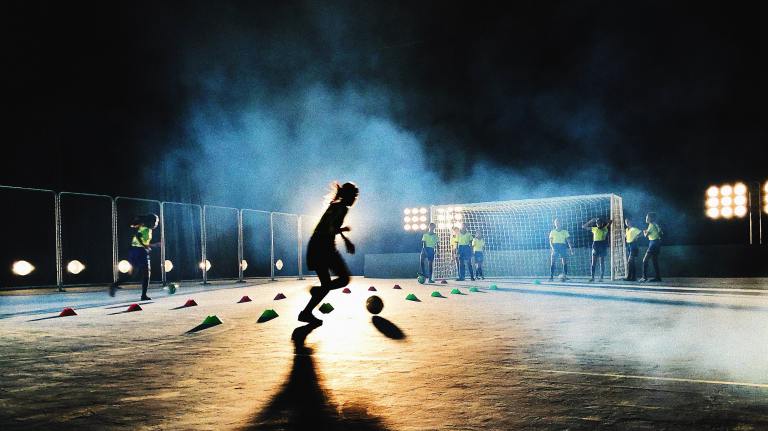Why Baseball Is Interesting
The hit, every hit, is explosive in its turn, setting the engine in motion. The game hums along and then: BAM! Everyone adjusts, everything shifts, affording the game this odd, syncopated, disjunctive rhythm.

Baseball is an exquisite game — elegant, epic, and strange. And anything but boring.
The ball in baseball plays a peculiar role. It not something to be possessed as it is in football and basketball. In this case, the ball is the thing that motivates behavior, a moving object that triggers a whole series of possible actions and outcomes that are created by both offense and defense at the same time. The ball is like the pulse — it’s referred to as a live ball — only it’s not at the center of the game: it moves, often explosively.
The ball inaugurates a complex engine as players shift in relation to each other depending on where it is. It’s not a matter or everyone running to the ball or to the guy with the ball. It’s about distributing bodies across the field in a way that makes sense. This is hard to see on television but, trust me, the players are all moving in relation to each other and the ball.
Baseball is the only team sport I can think of in which the defense gives the ball to the offense. The terms of this giving — pitching — are endlessly complex, an emergent calculus of propriety: the right thing to do changes for batter and pitcher after each pitch. And there is no one right thing.
The pitcher must deliver the ball in way that looks hittable but isn’t. Or, it is hittable, but not in way that will actually deliver a safe hit. The pitcher, then, is a sort of trickster. But there is a whole topology of pitching strategies. Some overpower with speed. Some throw tricky curve balls. Some paint the corners. Some throw hard inside at the batter’s hands. Most do an amalgamation of all of the above with variable emphasis.
Meanwhile, each at-bat is its own event, each pitch is its own circumstance that both defines and is defined by it place in that at-bat and that game. With each pitch, both pitcher and hitter must adjust his approach.
Of course, the very definition of a ball and a strike differs game to game, hitter to hitter. That’s because the definition of the strike zone is a general principle that inherently changes: more or less from the knees to the letters of a batter and over the plate. But different umpires have different strike zones. Like everything else in the game, the strike zone emerges.
And then there is the epic nature of hitting. If the hitter is a great hitter, having a great season, he will get on base one-third of the time. That means the best hitters in the game are out 66% of the time. That’s humbling. Indeed, baseball is built on humility.
Meanwhile, the batter has a lot of chances to hit. A lot: 162 games a season, playoffs excluded 4-5 at bats a game; a career of, say, 10-15 years. And it’s all tracked in stats that follow the hitter, a merciless judge that hovers over every swing.
I love all the different batting stances. You can read the entire drama of life in the breadth of different stances, of how we stand towards what life hurls our way.
The game then turns on these epic, emergent battles between pitcher and hitter. Each pitch is explosive, a profound event. Watch the fielders as the pitch is thrown: they lean forward, poised, at the ready for the always unpredictable trajectory of the ball.
The hit, every hit, is explosive in its turn, setting the engine in motion. The game hums along and then: BAM! Everyone adjusts, everything shifts, affording the game this odd, syncopated, disjunctive rhythm. Where basketball and soccer are lyrical, smooth, continuous baseball is punk, rough, avant-garde. ![]()





